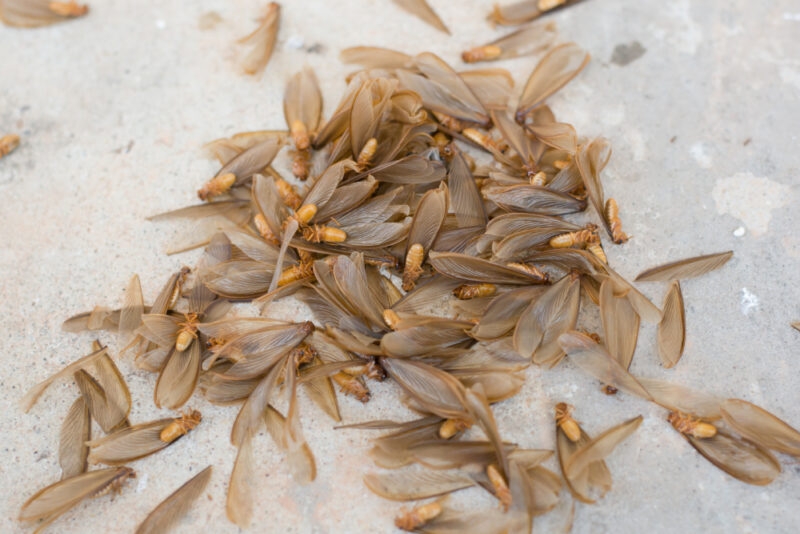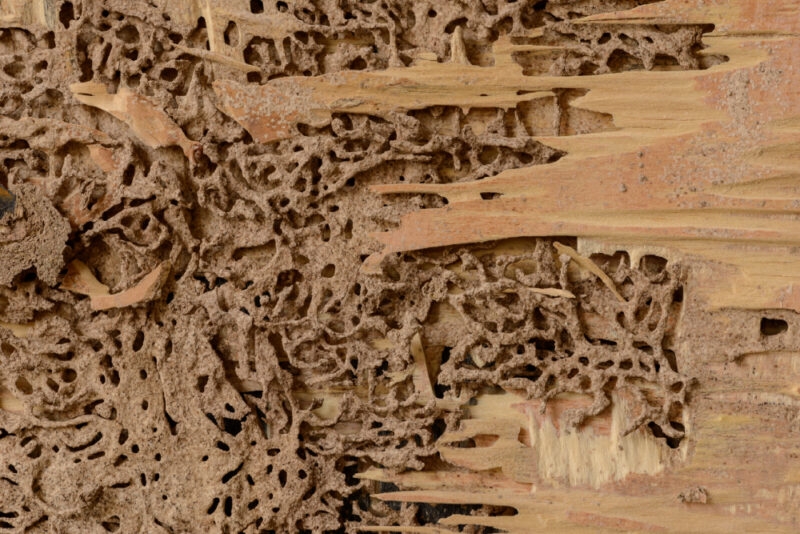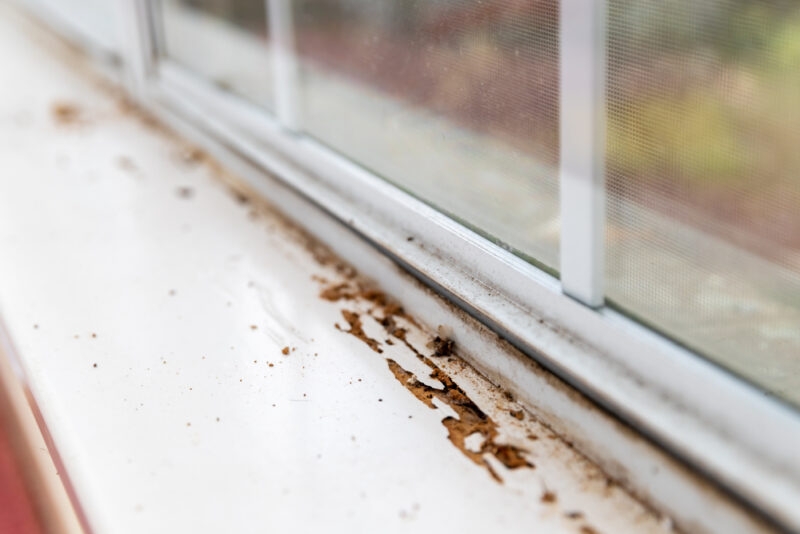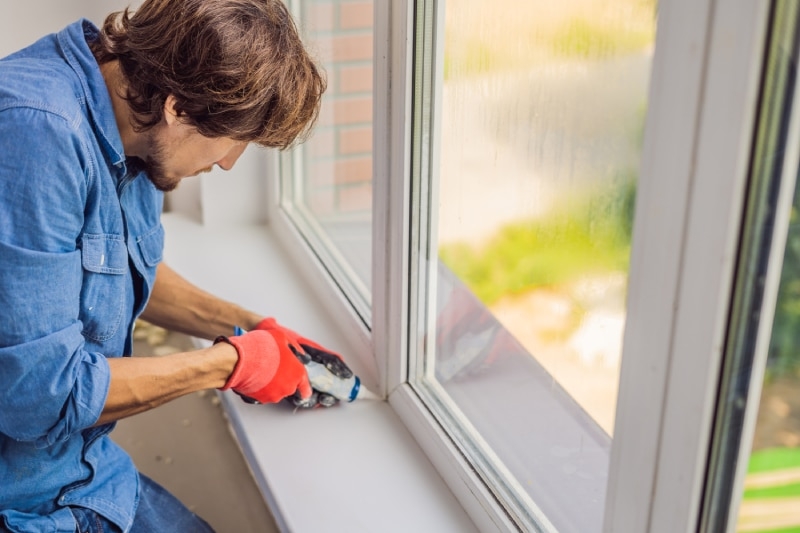Encountering insects of any sort isn't most people’s idea of a good time. But if you’re a homeowner, the last thing you want is to spot the dreaded signs of termite damage to your windows. Unfortunately, if you have termites, your windows are danger zone one. Protect your home by learning how to spot termite warning signs and take action against infestations before they become a nightmare.
What are termites—and why are they in my windows?
Termites are small, ant-looking insects that feed on dead plants—including all types of wood. They primarily live underground or within wooden structures. Plus, they tend to congregate in large colonies. All three of these characteristics make termites one of the biggest threats to man-made wooden structures on Earth. They eat through your home’s walls, they hide out where you can’t see them, and they live in massive groups.
Not only that, it’s sometimes hard to detect termites until you’re already deep into an infestation.
The good news? If you know what to look out for, you can spot them before they destroy your home. Window sills are often ground zero for termite activity for several reasons. Cracked window glazes or porous window sills tend to hold moisture after it rains, creating an alluring environment for potential swarms. Additionally, sill overhangs offer many insects shelter from harsher weather. That enticing protection puts other parts of your window at severe risk.

What can termite damage do?
Termite damage ranges from mildly annoying to absolutely devastating. Termites eat wood from the inside out, creating a network of tunnels. If you’ve ever seen an ant colony underground, it looks extremely similar. Termites, however, don’t burrow in the dirt; they burrow into wooden structures. Imagine the wooden framework of your home slowly eaten away until it looks like Swiss cheese—that’s what you’re fighting against.
Damage from termites gets exponentially worse over time because of where their burrows start. Most termites, no matter the strain, enter your home through already-damaged areas via existing cracks, fractures, and crevices. When they start tunneling, your termites inflict additional damage on already extant structural issues—quickly worsening the problems.
Because termite colonies only leave areas when their food source is depleted, untreated termites can quite literally consume your house.
Here’s how to catch them before that happens.
Early Warning Signs of Termites in your Window Sill and Frame
The best way to deal with termites is to catch them in the early stages. That’s not always easy, but there are a few warning signs you should be on the lookout for:
Termite wings on window sills
Termites with wings, or swarmers, leave previous colonies to establish new territories. Once they’ve found a home, they burrow into the wood, mate, and shed their wings in the process. If you see termite wings on your window sill, there’s a good chance a new colony of termites just moved into your house without paying rent.

Hollow sounds when you tap the wood
This warning sign isn’t always as obvious as others, but if you notice that part of your home sounds newly hollow, it’s likely because it’s been eaten. Sometimes, hollow areas also have small, protruding bumps in the wood. If you pop one of the bumps and powder comes out, you definitely have termites.
Small holes in the wood
Termites may enter through the outside of your home, but once they start building, they tend to pop out the other ends of their tunnels. If you look at the edges of your window sill and suddenly see small pores about the size of an ant’s body, you’ll want to check for an infestation.

Termite frass on window sill
Termite frass, also referred to as dust or excrement, usually piles up around tunnel entrances and exits during an infestation. If you see black particles or pellets on your window sill, there’s a chance they might be from termites. However, if frass is your only warning sign, investigate before pulling out the chemicals.
Black dots on the window sill can be symptomatic of a number of issues. They may be evidence of mold growth, dirt from cracks in the window, or (depending on the size) droppings from small mice. All of those issues need addressing, but it’s best to know which problem you’re dealing with before jumping into a solution that might not help.

Chewing sounds in the walls
This heading isn’t the start of a ghost story. If you’ve been sitting around hearing chewing sounds inside your walls, you’re not crazy: you simply may have termites. Not only is termite chewing loud enough to hear in your home, but many termites also bang against the wood in the process of tunneling. If you have drywood termites, the sounds can even keep you up at night.
If you think you hear munching in the walls, it’s well worth an investigation.
Dead and active termites on window sill
The clearest sign of termites? Spotting them in action. Whether you have dead or living termites, if you see them around, you can bet there are more in the walls. Dead termites might not indicate a severe infestation, but even a few termites can soon turn into a swarm. Always call an expert if you see a termite. In this case, being safe is always better than being sorry.
What are the stages of termite infestation?
No termites are good termites, but some colonies are more easily dealt with than others. In general, there are three termite infestation stages:
- Early infestations are typically evidenced by termite wings and visible termites—usually because their tunnels aren’t advanced enough to hide the entire colony. If you catch an early infestation, you can usually either DIY their removal or pay a small price for a professional.
- Ongoing infestations tend to be when the average person detects their termites. In this middle stage, you’ll probably notice small termite holes, trails of sawdust, and chewing sounds in the walls. Ongoing infestations are serious business and need to be dealt with by a professional, but they are salvageable.
- Mature infestations are extremely noticeable. If you’ve reached this point, your doors, floors, and walls likely warp, you probably have multiple nests and window sill evidence, and you have noticeable structural damage. In these cases, you can salvage the home, but you usually need to pay for a professional tenting process and significant home repairs.

How to Treat Termites in Window Sills and Frames
Nearly any level of termite infestation is best addressed by a professional exterminator. However, if you’re having a hard time getting one quickly, here are a few things you can do at home to help the process:
Spray store-bought termite killer
You can find termite killer spray and/or foam in most local hardware stores. Once you have it, simply apply it to the window sill, paying special attention to any termite holes or cracks in the window. If you don’t see any large holes, you can also use a drill to create more access to the chemicals. As always, be careful using any type of chemical in your home when children or pets are present.
Use caulk to seal window cracks
Caulk won’t eliminate current termites, but it can stop the colony from spreading while you wait for professional assistance. You can buy caulk at most stores. Simply squeeze thin lines of it over suspicious cracks or holes.

Install window screens and a bug zapper
Similarly to caulk, window screens and bug zappers won’t solve the problem, but they will help temporarily slow the spread. Most bugs enter the home through open windows, so screens to block them and zappers to kill them go a long way towards heading off infestations.
Set up a dehumidifier
Termites love moist wood. Dehumidifiers remove moisture in the environment which can make your home less appealing to insect guests. Dehumidifiers also serve a dual purpose near windows. Less humidity near your windows means far less risk of moisture-based damage, including dangerous black mold.
FAQs
Are landlords required to fix damage from termites?
Yes, if you live in a rented property, then your landlord is financially responsible for eliminating termites and fixing any damage. However, if you’re dealing with a mature infestation, this responsibility can be contested on the grounds that you did not report the termites earlier. When in doubt, always report termites early and check on your lease terms.
Are termites an issue with window planter boxes?
Yes, window planter boxes may attract termites. Termites are drawn to any window sill with moisture or cracks. Window planter boxes add moisture and soil to your window environment, which can attract termites. That said, with the right seals, you have nothing to worry about.
Can termites enter through screen windows?
Yes and no. Termites are small and frequently enter homes through cracks or openings we cannot see. Screens can help prevent termites from entering, but they don’t completely eliminate the possibility.
What are the different types of termites?
There are five types of termites most commonly found in homes:
- Subterranean: soil-dwelling termites with the largest colonies and nests of any termite. Usually considered the most destructive by pest experts.
- Formosan: a sub-type of subterranean termites usually found in the southern United States. These termites are extremely attracted to moisture and light.
- Dampwood: moisture-dependent termites who eat quickly and prefer exclusively wood diets—as opposed to soil. Not as frequently found in homes.
- Drywood: smaller-colony termites that prefer dried-out wood, dead trees, and wooden flooring. Destructive, but easier than some other types to exterminate.
- Conehead: a sub-type of drywood termites primarily located in Florida and the Caribbean.
Do I need to replace my windows if I have termites?
Depending on how bad your infestation gets, you may need to look at a window sill, frame, or glazing replacement. Small cases don’t require a full overhaul, but you will want to take measures to keep termites from ever coming back. If you’re worried about getting termites, the best place to start preventative care is your windows. After all, your window should last its full life expectancy—not get eaten by a bunch of burrowing bugs. To check for leaky windows, cracks, or even termite damage to your window structure, reach out to Window Nation’s team of friendly experts today!



